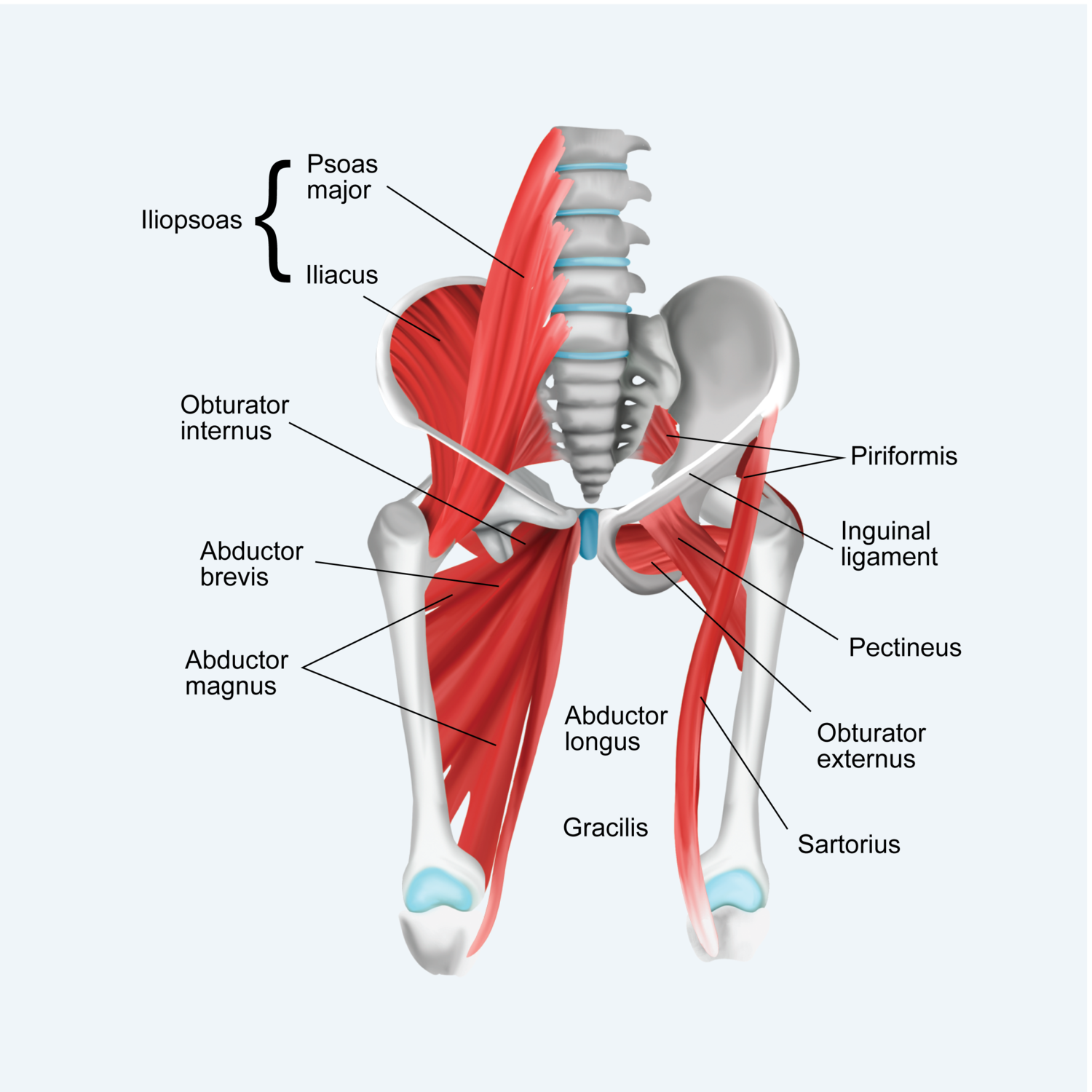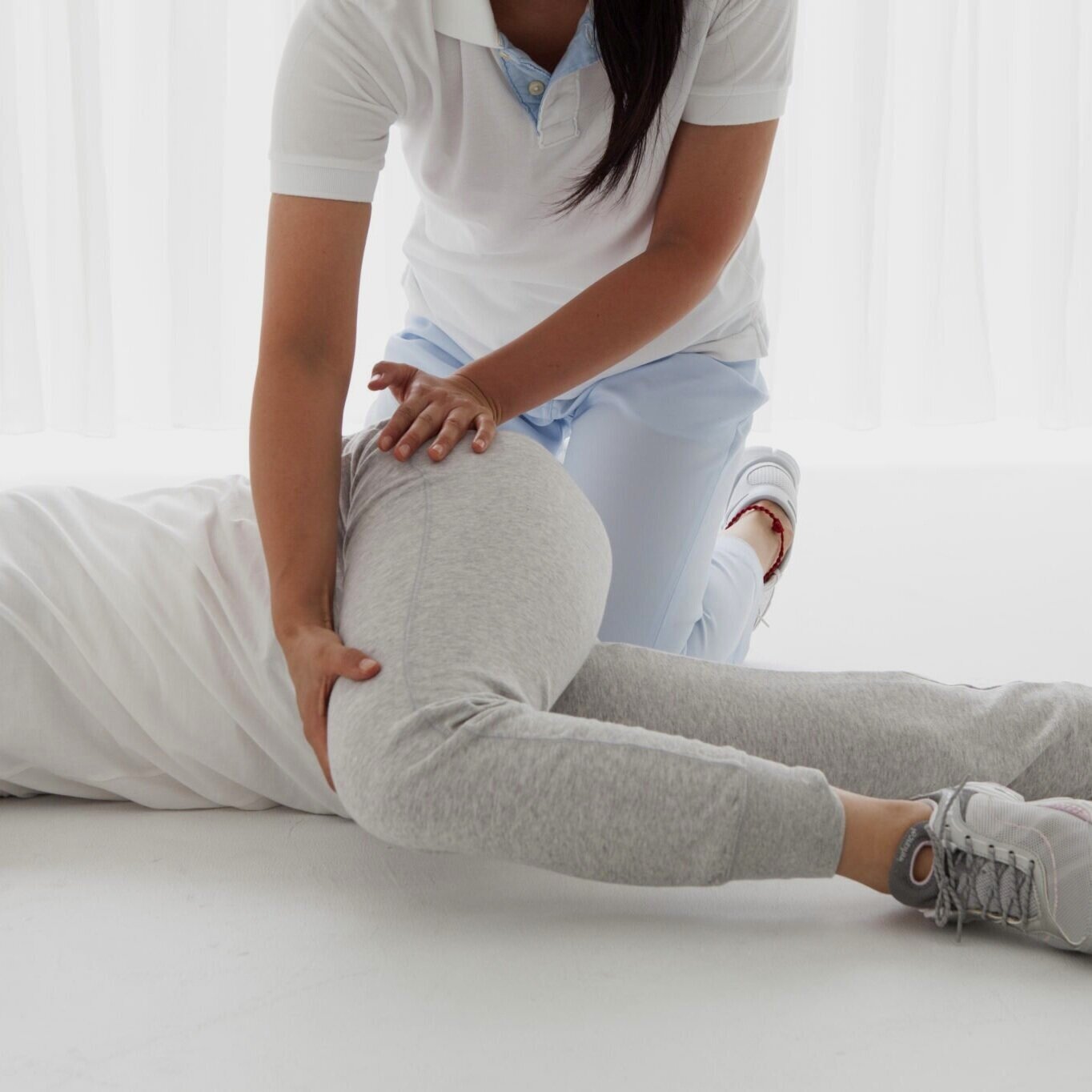The Hip

The hip is a pivotal ball and socket joint in the human body. This joint is where the pelvis comes in contact with the lower extremity. The hip is made for stability and weight bearing. Due to the protected location and overall stability, this joint is typically injured less than the knee or shoulder. However, the hip can still be predisposed to acute or chronic injury.
If you’re experiencing hip pain, call one of our offices or book an appointment online to get started.
Hip Anatomy
Your hip consists of one major joint called the femoroacetabular joint. This is a stable ball and socket joint similar to the shoulder but made for less mobility. The acetabulum is the deep socket portion of the joint attached to the pelvis. The socket is deepened by a cartilage structure known as the labrum that helps provide additional support.
The hip joint is surrounded by musculature that helps move the hip and lower extremities. These muscles include the gluteus muscles, hip adductors and abductors, hip flexors also known as the quadricep muscles, and the hamstrings. The hip is in a crucial location of the body that is intertwined with the lower back and pelvis. Any injury to any of these structures may present as hip pain and thus must be evaluated thoughtfully.


What causes hip pain?
What causes hip pain?
There are many causes of hip pain. Some of the most common are damage to the cartilage of the hip leading to arthritis, tears of the labrum caused by impingement, inflammation known as hip trochanteric bursitis, or muscular or tendon-related injuries. Acute fractures or stress fractures to the hip or pelvis can also occur but are much less common. Pain from these injuries can be experienced in various locations, including on the lateral hip, groin area, or near the posterior gluteus muscles depending on the cause of your symptoms.
Treatment
At Pacific Crest Orthopedics, we customize a treatment plan to meet your individual needs. In the hip, some of the most common treatments can include different types of injections, the use of anti-inflammatories, physical therapy, or rest and non-weight-bearing in crutches. For some conditions, surgery is indicated as the best option.
Ephraim Dickinson, MD has extensive experience treating your hip pain and providing therapies to prevent future problems and to keep you active and healthy. Don’t continue to suffer from hip pain or immobility. If you have questions about hip pain, call Pacific Crest Orthopedics in San Francisco or use the online booking tool to schedule an appointment today.

Real Stories, Real Recovery.



